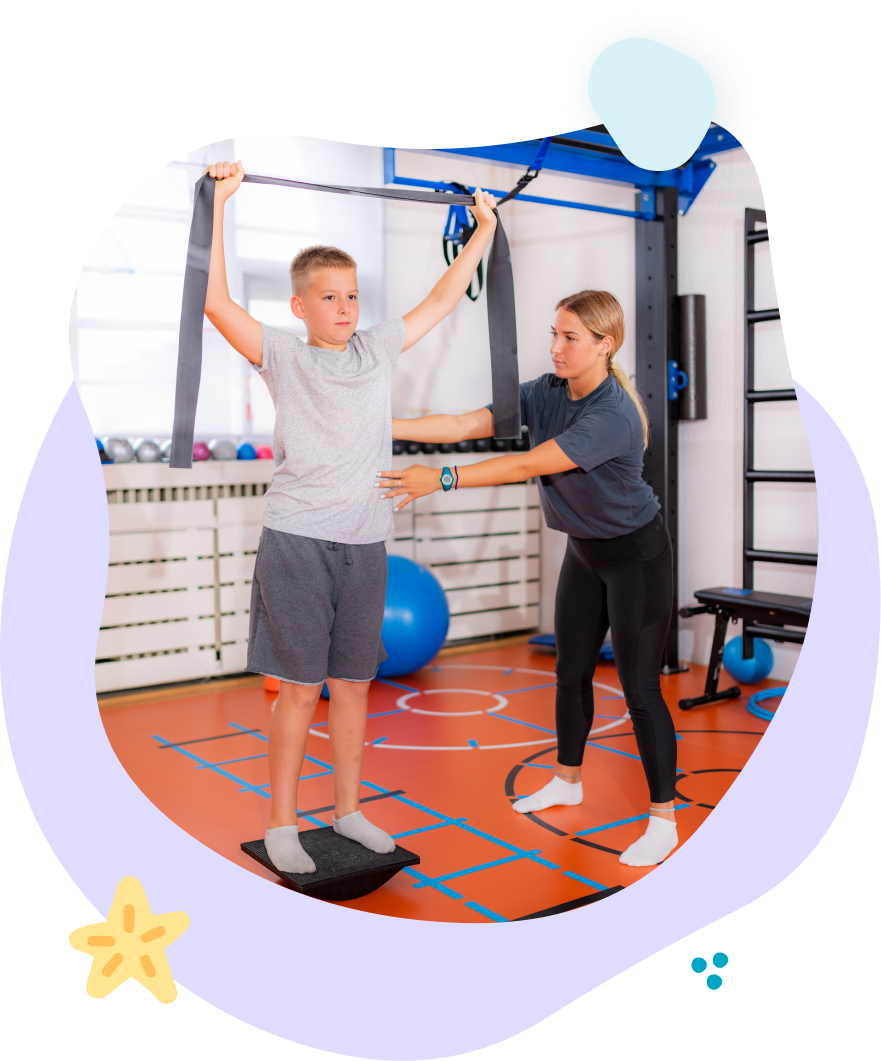Your Clinic
SET A LOCATION
Your Clinic
SET A LOCATION
Gross motor skills are essential for a child’s ability to move and navigate their world. These include activities like crawling, walking, running, and jumping. For some children, development in these areas may be delayed, affecting their independence and daily activities. Identifying the signs of delayed gross motor development and seeking timely intervention is crucial. Physical therapy (PT) and occupational therapy (OT) play a pivotal role in supporting children to achieve milestones and improve their quality of life.
Delayed gross motor development occurs when a child does not achieve motor milestones within the typical age range. For example:
6-9 months: Difficulty sitting without support.
12-18 months: Delayed walking or standing independently.
2-3 years: Challenges with running, jumping, or climbing.
Causes can vary, including:
Neurological conditions (e.g.,
cerebral palsy).
Genetic disorders (e.g.,
Down syndrome).
Muscle tone issues (hypotonia or hypertonia).
Premature birth or developmental delays without a clear medical diagnosis.

Children with gross motor delays benefit from our specialized therapeutic tools that build strength, coordination, and movement patterns. Our interventions help children develop the fundamental motor skills needed for crawling, walking, running, and playing.

Aquatic Therapy is a skilled treatment method used by therapists to enhance your child's functional abilities. The warm, buoyant water enables your child to feel free and have fun in therapy, in a natural environment! The water's buoyancy reduces stress on joints and muscles while providing resistance for strength building, making it particularly beneficial for children with movement limitations.
Attend our clinics for expert orthotics evaluations and fittings, designed to improve mobility and ensure optimal comfort tailored to your needs. Children at PPT can attend monthly clinics for custom wheelchairs or orthotics, designed to enhance mobility and ensure proper postural alignment. These specialized devices support proper body alignment and improve functional mobility.

Physical therapy (PT) focuses on improving movement, strength, and coordination. A physical therapist will:
Use evaluations to understand posture, muscle tone, and coordination deficits.
Tailored exercises help children achieve milestones like rolling, standing, or walking.
Therapeutic activities target weak areas and enhance overall stability.
Tools like walkers or foot orthotics may aid mobility.
Therapists also empower families with home exercise programs and strategies to integrate therapy into everyday play.
Occupational therapy (OT) complements physical therapy by focusing on the functional aspects of movement and play. OT services may include:
Helping children with hand-eye coordination or tasks that require strength and precision, like climbing or catching.
Addressing sensory processing issues that impact movement planning.
Encouraging age-appropriate play that builds confidence and motivation.
Recommending adjustments to the child’s home or school setting for accessibility.
Combining PT and OT provides a comprehensive approach to addressing gross motor delays. Early intervention can:
Parents should consult a pediatrician if they notice persistent delays or struggles with mobility. Referrals to physical and occupational therapy can pave the way for tailored support.
If your child exhibits delayed gross motor development, partnering with skilled therapists is the first step. By combining physical and occupational therapy, children can overcome challenges and thrive in their environment.
Learn how our therapy services can support your child’s gross motor development. Reach out to our team to schedule an evaluation today!
We empower children, families, and the community to learn, grow, and celebrate every child's unique abilities.
Quick Links
Contact Details
Phone: 561-376-2573 | 561-918-0190
Fax: 561-218-4939
VIP Concierge: 561-717-1764
Clinic Locations
All Rights Reserved | Progressive Pediatric Therapy, Inc. | Privacy Policy | Terms of Service
Site by Spearlance